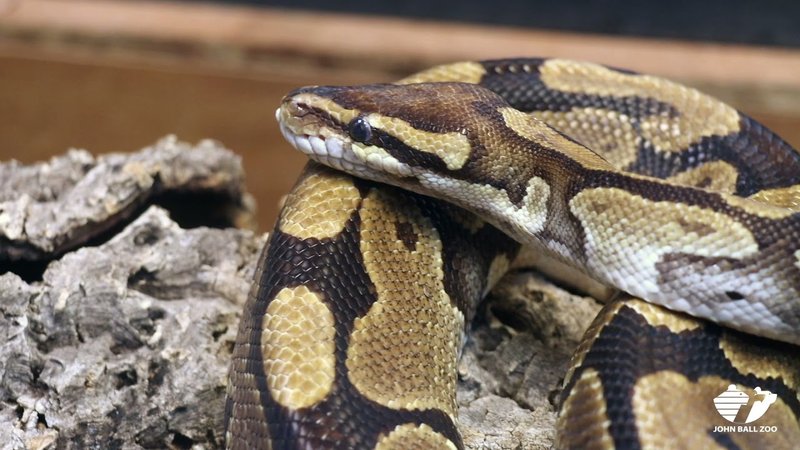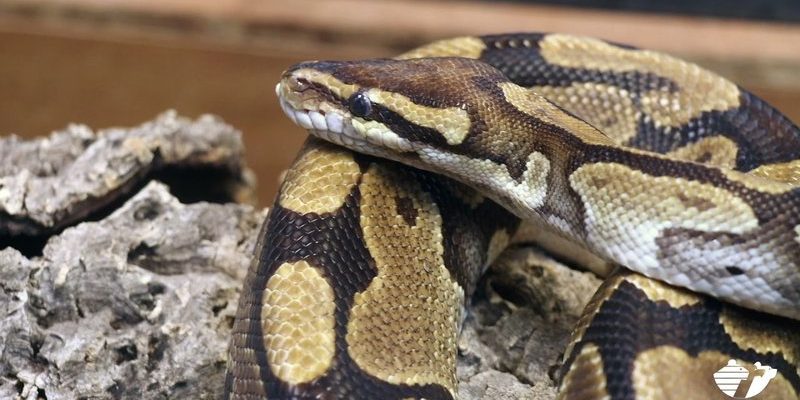
Ball pythons, or *Python regius*, are among the most popular pet snakes globally, but spotting them in the wild is a whole different ball game. They are typically found in a variety of environments, ranging from grasslands to open forests. Their patterns and colors can vary widely, making identification tricky for the untrained eye. So, if you’re curious about how to recognize these snakes in the wild, grab a cup of coffee, and let’s dig into some key aspects that will help you identify a ball python effortlessly.
Distinctive Patterns and Colors
One of the most striking features of a ball python is its unique coloration. Their skin can range from yellow to brown, often adorned with dark brown or black markings that create a beautiful contrast. Think of it as nature’s artist at work, crafting a pattern that’s both functional and stunning. These patterns help ball pythons blend into their surroundings, making them less noticeable to predators and prey alike.
Ball pythons usually have a base color that can vary from light tan to a rich, dark brown. You might also spot some morphs, which are color and pattern variations bred in captivity. These can include shades of ghost, albino, or even piebald. When you see a snake in the wild, take a moment to appreciate its unique appearance. Notice the bold markings that often resemble random splotches or bands. This distinct look is one of the first clues that you might be looking at a ball python.
Size and Shape
When it comes to size, ball pythons are relatively small compared to other pythons. Adult ball pythons typically reach about 3 to 5 feet long. They have a robust body that’s more compact and rounded than some other snake species. Think of them as the bulldogs of the snake world—stocky and strong without being overly lengthy.
You might wonder how to tell a ball python apart from other similar-looking snakes. Look for their characteristic head shape which is distinctly wider than the neck, giving them a triangular appearance. Their eyes are also quite distinctive, with dark irises and a somewhat “sleepy” look. This can help you differentiate them from other snakes that may share their habitat.
Behavioral Traits
Now, let’s talk about behavior. Ball pythons are generally known for being shy and non-aggressive. If you encounter one, you might notice it curling up into a ball—hence the name. This defensive behavior is their way of protecting themselves from potential threats. They’d rather hide than confront a danger. If you see a snake curled tightly, there’s a good chance it’s a ball python trying to feel safe.
When disturbed, a ball python might also choose to flee instead of fight. This can make them less intimidating to spotters. If you approach one slowly, you might get to observe its natural curious behavior. They often keep their heads lifted, scanning their surroundings, which can be quite a sight to see.
Habitat and Location
Understanding where ball pythons like to hang out is crucial for identification. These snakes are often found in grasslands, savannas, and forests of West and Central Africa. They prefer areas that offer plenty of hiding spots, like hollow logs, rock crevices, or dense vegetation. When looking for them, think about places that would provide shelter and warmth—a perfect hiding spot for our friend the ball python.
If you’re hiking or exploring in regions known for their populations, keep your eyes peeled in these areas. They typically hunt at night (nocturnal), looking for small mammals, which makes them less visible during the day. If you’re out early in the morning or late in the evening, you might just catch a glimpse of one basking in the sun or slithering through the underbrush.
Key Identification Features
When you finally spot a ball python, there are some key features to focus on for a positive ID.
- Head shape: Look for a distinct triangular head that’s wider than the neck.
- Body color: Their skin can range from yellow to dark brown, often with unique patterns.
- Size: Adult ball pythons are usually 3 to 5 feet long.
- Behavior: If it curls up into a ball, that’s a classic ball python move.
Each of these features will help you confirm your identification. So when you’re out in the wild, take your time to observe. The more you familiarize yourself with these traits, the easier it will be to spot them.
Safety Considerations
While ball pythons are generally harmless to humans, it’s still important to approach any wild snake with caution. Here’s the thing: even if they’re known for being docile, you never want to corner or frighten a snake. A scared snake might bite in self-defense. If you do encounter a ball python, just observe from a distance.
If you’re a beginner, it’s a good idea to have someone more experienced accompany you. They can help you stay safe while you practice your identification skills. Remember, the goal is to enjoy and appreciate wildlife, not to disturb it.
Now you have a solid understanding of how to identify a ball python in the wild. Whether it’s the distinctive patterns, unique body shape, or their fascinating behaviors, these snakes are truly remarkable creatures. Just remember to stay safe and observe from a distance. Each encounter can teach you more about their habits and habitats.
So, next time you’re out exploring, keep your eyes peeled. You never know when you might catch a glimpse of a ball python basking in the sun or hiding in the bushes. Happy snake spotting!

